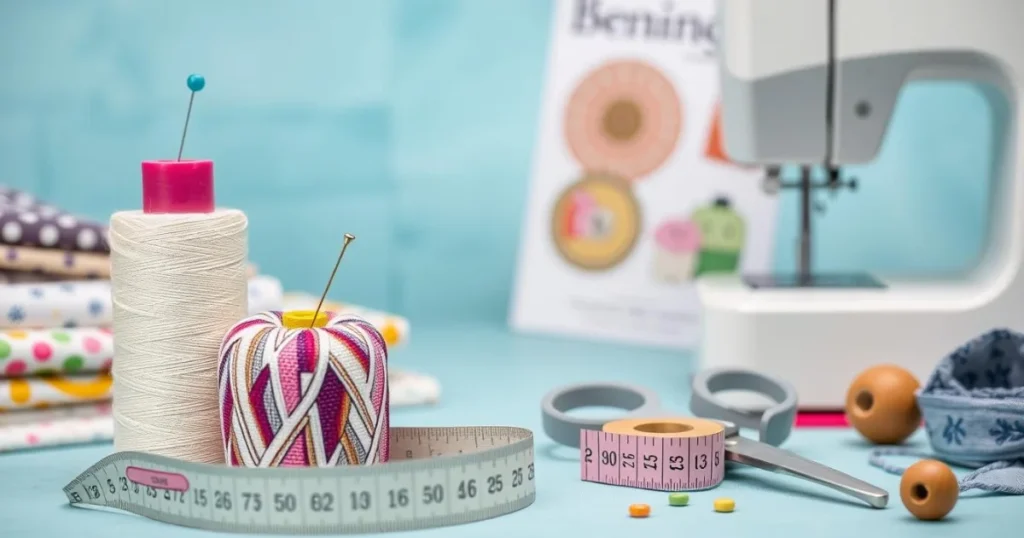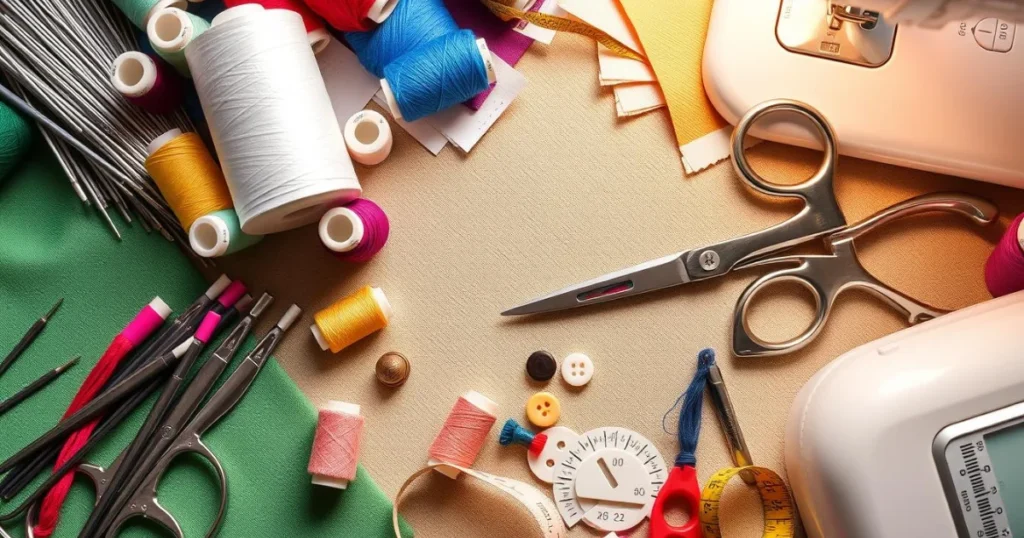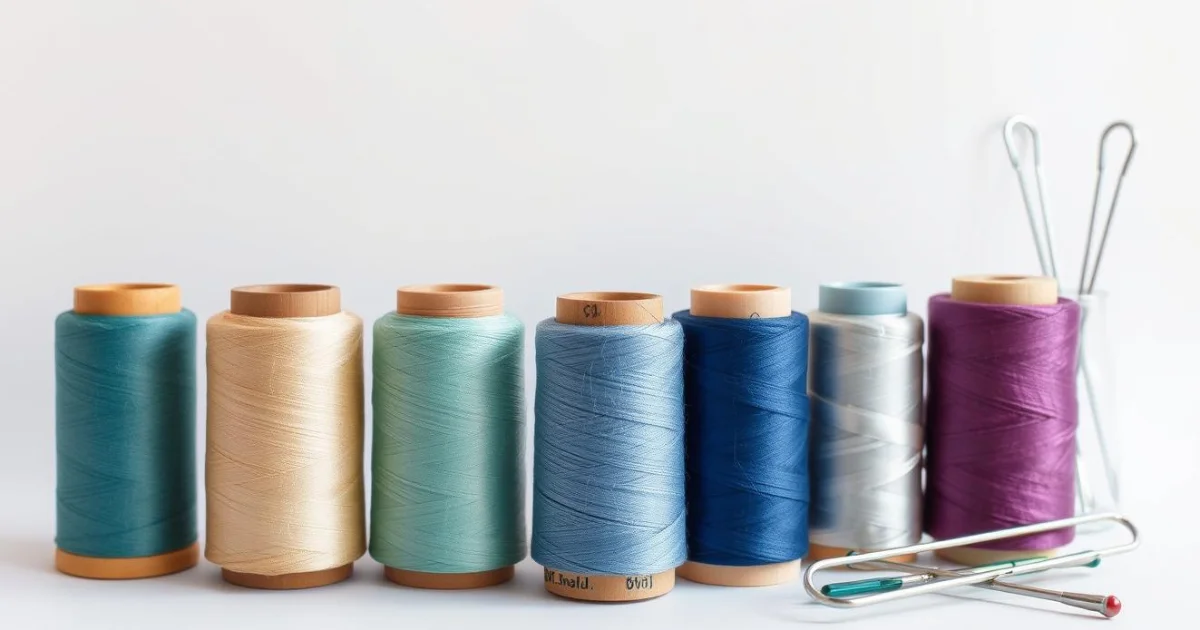How to Sew: Easy Beginner’s Guide to Mastering Sewing Basics
Learning to sew can be very rewarding. It lets you make unique clothes and home decor, fix and change old clothes, and start a new hobby. With the right skills, you can explore a world of creativity and self-expression. This guide will teach you the basics of sewing, from tools and materials to hand and machine sewing.
Getting good at sewing takes patience, practice, and dedication. But the rewards are worth it. By learning different sewing techniques, you can make items that show off your style and personality. This guide will help you start your sewing journey, whether for practical needs or as a creative hobby.
Starting your sewing journey can be very fulfilling. With the right help and practice, you’ll get better at sewing and feel more confident. You can go from simple repairs to making complex clothes. Sewing is a skill that can bring you joy and satisfaction for years to come.
Table of Contents
Getting Started with Sewing: Essential Tools and Materials
To start with beginner sewing projects, you need the right sewing supplies. This includes a basic sewing kit, fabric, threads, and needles. A good sewing kit is key to any sewing project’s success.
Quality matters when it comes to sewing supplies. High-quality threads and needles make your stitches even and strong. Also, picking the right fabric is crucial for the look and feel of your project.
Learn How to Sew: Getting Started with the Basics
Learning how to sew begins with knowing your essential tools. A measuring tape, sewing needle, and sewing thread form the base of every project. Whether you’re sewing by hand or using a domestic sewing machine with a foot pedal, mastering basic controls like the hand wheel, bobbin tension, and reverse stitch lever is key. Practice threading the needle with a needle threader or an automatic needle threader, and use scrap fabric to test your stitches before starting your real work.
Essential Tools and Techniques for Better Sewing
As you advance, try working with specialized tools such as pinking shears for pinked seams, a fabric marking pen for clear guides, and an iron and ironing board to press your seams. You’ll learn how to work with natural fibers, plastic pieces, and all-metal parts depending on your machine. Keep a sewing book or sewing journal to track skills like French seams, bias tape application, and zipper applications. Understanding Feed Dog function, needle placement, and seam guides will help you create precise construction stitches and smooth finishing stitches.
Mastering Hand Sewing and Creative Projects
Hand stitching offers a personal touch to any creation. Practice basting stitches, whip stitches, blanket stitches, and slip stitches, remembering to finish by knotting the thread. Use a safety pin to pull elastic through waistbands or align fabrics evenly. Explore hand-guided sewing for smaller crafts like pillow covers, and improve your skills with pattern drafting, stretch tests, and basic clothing construction. These techniques are also useful for home dec projects.
Exploring Indie Patterns and Modern Sewing Inspiration
Today’s slow fashion movement celebrates mindful making through indie pattern companies like Grainline Studios, Cal Patch, Sonya Philip, Kwik Sew, and Burda World of Fashion. Their indie patterns support a sustainable, capsule wardrobe approach to sewing. Follow sewing demonstrations or a learning series to refine your skills and master techniques step by step. Every project teaches you more about your craft—turning sewing into both a creative journey and a lifelong passion.
Basic Sewing Kit Components
A basic sewing kit should have tools like scissors, pins, needles, and threads. These are needed for cutting, pinning, and sewing. It also helps to have a seam ripper, tape measure, and fabric markers in your kit.
Choosing the Right Fabric
Choosing the right fabric is key in beginner sewing projects. The fabric you pick depends on your project and what you like. Think about the fabric’s texture, weight, and color when making your choice.
Understanding Thread Types and Needles
It’s important to know about different threads and needles for beginner sewing projects. There are many threads like cotton, polyester, and silk, each with its own features. There are also various needles, like sharp, blunt, and tapestry needles, for different sewing tasks.
Understanding Your Sewing Machine
To get the most out of your sewing, knowing your machine is key. Learn about parts like the spool pin and stitch selector. Sewing tips and tutorials can help you thread and wind bobbins right.
Keeping your machine clean and oiled is vital. It helps avoid problems like thread breaks. With these tips, you can fix issues and get great results.
Some important things to remember include:
- Always check your user manual for machine use
- Choose the right thread and needle for your project
- Keep your machine clean and well-oiled to prevent damage
Practice with sewing tutorials to improve your skills. Always follow safety rules and ask for help if needed.
With time and effort, you’ll get better at using your sewing machine. It’s crucial for making professional-looking projects. Sewing tips and tutorials will help you use your machine to its fullest potential.
Basic Hand Sewing Techniques
Hand sewing is a key skill for every sewer. It offers precision and control that machine sewing can’t. Learning basic hand sewing techniques lets you make unique items, from clothes to home decor. We’ll cover essential techniques like the running stitch, backstitch, whipstitch, and hemming by hand.
These skills are vital for any sewer, whether you like hand sewing or machine sewing. With practice, you’ll get better at sewing. You’ll need a needle, thread, and fabric to start.
- Creating unique and personalized items
- Developing muscle memory and improving overall sewing skills
- Having control and precision over your stitches
Mastering these basic hand sewing techniques will boost your sewing skills. You can make beautiful, professional-looking items. These techniques are crucial for any sewer, whether you prefer hand or machine sewing.
How to Sew with a Machine: Fundamentals
Learning the basics of machine sewing is key to making professional-looking clothes and home decor. Knowing sewing patterns and basics boosts your confidence in machine sewing. First, thread your machine right, pick the right stitch, and adjust the tension and length.
Choosing the right fabric and thread is crucial for smooth sewing. Learning basic stitches like straight, zigzag, and reverse is important. Proper thread tension and stitch length ensure even stitches.
Here are some key tips for sewing with a machine:
- Choose the right needle type and size for your fabric
- Adjust the stitch length and width according to your fabric type and sewing pattern
By following these tips and practicing, you’ll master machine sewing. Always stick to sewing patterns and basics for professional results.
| Stitch Type | Stitch Length | Tension |
|---|---|---|
| Straight Stitch | 2.5-3.5 mm | Medium |
| Zigzag Stitch | 3.5-4.5 mm | Loose |
| Reverse Stitch | 2.5-3.5 mm | Tight |
Common Sewing Terms and Terminology
Learning how to sew means getting to know sewing terms. Knowing these terms makes it easier to follow patterns and join sewing communities. Sewing techniques can seem hard, but understanding the basics helps a lot.
Let’s look at some basic terms. Grain is the fabric’s weave direction, and selvage is its self-finished edge. Bias is the fabric’s diagonal direction. Knowing these helps you work with fabric better and pick the right sewing techniques for your projects.
Here are some key terms to know when learning how to sew:
- Grain: The direction of the fabric’s weave
- Selvage: The self-finished edge of the fabric
- Bias: The diagonal direction of the fabric
- Stitch: A single unit of sewing, such as a running stitch or backstitch
Getting good at sewing techniques takes time and practice. But knowing the basics well helps you make beautiful projects. Whether you’re new or experienced, always learning new skills keeps you excited about sewing.
| Term | Definition |
|---|---|
| Grain | The direction of the fabric’s weave |
| Selvage | The self-finished edge of the fabric |
| Bias | The diagonal direction of the fabric |
Essential Sewing Skills for Beginners
Learning the basics of sewing is key for beginners. With the right tools, anyone can make beautiful projects. It’s important to know how to cut fabric, pin, and mark, and understand seam allowances.
Cutting Fabric Properly
Cutting fabric well is crucial for sewing. Using tools like rotary cutters and mats helps a lot. Make sure to cut on a stable, flat surface to avoid mistakes.
Pinning and Marking
Pinning and marking are important steps in sewing. They help guide the sewing machine and keep fabric aligned. The right pins and markers are essential for accuracy.
Some key supplies for pinning and marking include:
- Straight pins
- Curved pins
- Fabric markers
- Chalk

Seam Allowances
Knowing about seam allowances is vital for professional-looking projects. Seam allowances are the extra fabric for seams. They vary by fabric and project. The right allowance makes a big difference in the final look.
| Seam Allowance | Fabric Type |
|---|---|
| 1/4 inch | Cotton, linen |
| 1/2 inch | Knit, stretchy fabrics |
Troubleshooting Common Sewing Problems
As you get better at sewing, you might run into problems. We’ve gathered common sewing issues and how to fix them. With these tips and tutorials, you can solve problems fast and make your projects perfect.
Some common problems include machine issues, like thread breakage or uneven stitching. You might also face fabric handling challenges, like wrinkled or distorted fabric. And sometimes, you might get uneven or loose stitches. Understanding the causes and taking steps to prevent them is key.
Machine Issues and Solutions
- Check your machine’s tension and thread quality
- Use the correct needle type and size for your fabric
- Regularly clean and maintain your machine to prevent dust and debris buildup
Fabric Handling Challenges
To prevent fabric handling issues, make sure to:
- Prewash and dry your fabric before cutting and sewing
- Use a rotary cutter and mat to ensure accurate cuts
- Iron your fabric regularly to remove wrinkles and creases
Stitch Quality Problems
To achieve high-quality stitches, follow these sewing tips:
- Use the correct stitch length and width for your fabric
- Keep your fabric taut and smooth as you sew
- Use a walking foot or even feed foot to guide your fabric
By following these sewing tutorials and tips, you’ll be able to troubleshoot common sewing problems. This will help improve your sewing skills. Always check your machine’s manual and follow the manufacturer’s guidelines for maintenance and troubleshooting.
| Problem | Solution |
|---|---|
| Thread breakage | Check thread quality and machine tension |
| Uneven stitching | Adjust stitch length and width |
| Wrinkled fabric | Prewash and dry fabric, iron regularly |
Simple Projects to Practice Your Skills
As you get better at sewing, it’s time to try out some simple projects. Hand sewing and machine sewing are key skills to master. Start with a tote bag for machine sewing or a pillowcase for hand sewing.
Here are some project ideas to get you started:
- Tote bag: practice your machine sewing skills and create a reusable bag
- Pillowcase: use hand sewing to create a beautiful and unique pillowcase
- Simple dress: combine hand sewing and machine sewing to create a beautiful dress
Don’t be afraid to try different fabrics, colors, and embellishments. This will help you find your own style and creativity. With these projects, you’ll improve your hand sewing and machine sewing skills and make something beautiful and useful.

Conclusion: Taking Your Sewing Journey Forward
As you finish this beginner’s guide to sewing, remember it’s just the start. The sewing patterns and basics you’ve learned will help you in your future projects.
Now, it’s time to try new things. Look for sewing classes, join online sewing groups, and play with different fabrics and patterns. The more you sew, the better you’ll get.
Sewing is more than just a skill; it’s a way to express yourself and find happiness. Be creative, try new things, and don’t worry about mistakes. They’re all part of learning. With hard work and love for sewing, you’ll make amazing clothes, home items, and accessories that show off your style.
Happy sewing, and may your journey be filled with endless inspiration and a love for sewing.

